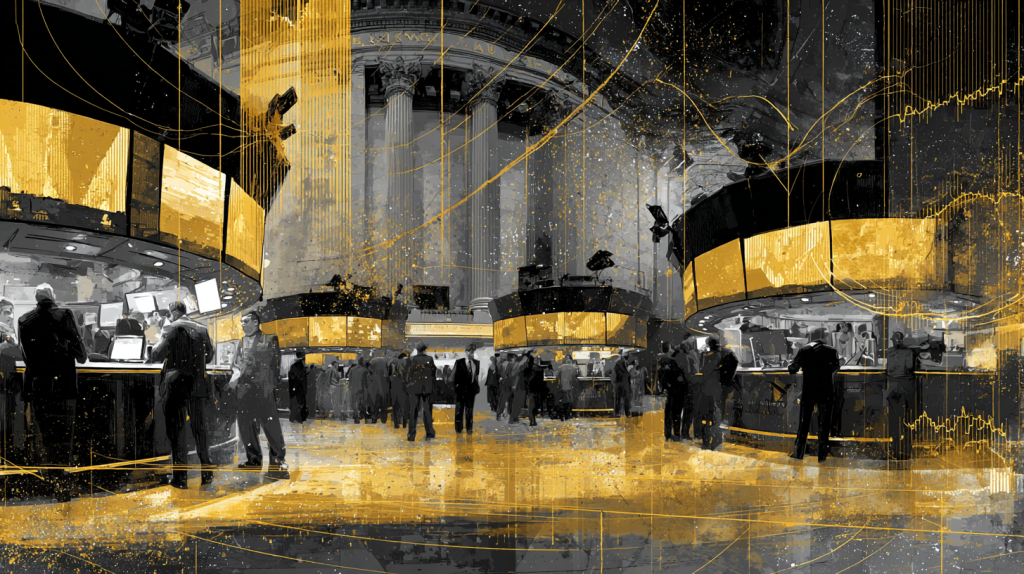
Table of Contents
AI optimism boosts stocks from the opening bell as investors piled into chipmakers, cloud infrastructure, and data-center plays, pushing the Nasdaq and S&P 500 toward fresh records even while a federal government shutdown and softer private payrolls raised policy uncertainty. The interplay is clear and unstable: investors are pricing both a durable structural uplift from artificial intelligence and an assumption that political shocks will be short lived. As Reuters reported, traders leaned on private labor reads and renewed rate-cut bets while buying tech names in force.
Why AI Optimism Boosts Stocks Right Now
Markets are narrative machines. With official data flows weakened by a partial federal shutdown, the AI story became the easiest path for capital to justify higher valuations. Nvidia led the charge to record highs, memory suppliers and foundries rallied, and cloud-service providers saw multiple sessions of strength. The thesis is simple: foundation models require vast compute, storage, and networking, and the firms that rent or sell those resources are in the cash flow line.
That does not make the rally invulnerable. The S&P 500’s climb above 6,700 is heavily concentrated in a handful of companies that stand to benefit from AI. When market leadership is narrow, index performance can swing violently if any of those leaders disappoint. The paradox is that a story that feels structural can still be powered by short-term sentiment and scarce data.
The Data Void and Policy Consequences
A shutdown creates a vacuum of official information, and private proxies step into that space. ADP’s payrolls release and hiring-intent surveys from Challenger, Gray & Christmas are now central to investor calculus. Those private indicators are signaling a softer labor market, which increases the odds traders place on Fed easing. Lower expected rates reduce discount rates and support higher multiples for growth companies, which explains part of why the AI trade looks attractive right now.
At the same time, a prolonged shutdown can have real economic consequences. Delays to payments, procurement, and regulatory processes would reduce near-term demand and amplify uncertainty. Markets may be pricing in a short interruption, but the political timeline matters. Investors should not mistake temporary calm for structural immunity.
Valuation Stress Points and Real Demand Tests
AI optimism boosts stocks in two ways: it raises the present value of future earnings, and it sends procurement into overdrive. The sustainable part of the move is predictable revenue tied to signed contracts and recurring cloud spend. The speculative part is commitments that look like orders but are actually short-term inventory shifts.
Watch these validation signals closely:
- Hyperscaler capex guidance and quarterly commentary about AI projects.
- Enterprise contract announcements that show committed, multi-year spend.
- Data-center utilization and vacancy metrics in key markets.
If hyperscalers pull back or guidance disappoints, multiple compression will be swift. The market is pricing forever growth without yet having full visibility into contract rollouts and sustained demand patterns.
A Tactical Playbook for Investors
If you want exposure to the AI-led rally while managing risk, think like an allocator rather than a zealot.
- Prioritize firms with recurring revenue and long-term contracts for AI workloads.
- Use options or position sizing to hedge concentrated large-cap exposures.
- Monitor private labor data and shutdown developments because they influence both Fed expectations and corporate budgets.
- Separate companies with visible, signed AI revenue from those priced on potential demand.
This trade is not a simple buy-and-hold. It is a staged adoption story that requires active monitoring of capex flows and enterprise deployments.

Civic Risk and Market Fragility
There is a broader civic dimension to this moment. The market can temporarily ignore governance failures, but not indefinitely. Institutional legitimacy supports long-term planning, procurement strategies, and regulatory clarity. A funding impasse that drags on undermines that predictable environment. It also feeds political narratives about corporate power and inequality that can shape future regulation.
That intersection of wealth, power, and policy plays out in public narratives and investor psychology. For context on how headline valuations and billionaire fortunes influence those debates, see our coverage of Elon Musk’s net worth swings, which helps explain how public perception and policy can move in concert with market moves.
What Could Puncture the Rally
AI optimism boosts stocks now, but several concrete triggers could reverse sentiment quickly:
- Hyperscalers announce a pause or cut to incremental AI server purchases.
- An infrastructure vendor posts an earnings miss linked to softer order intake.
- The government shutdown extends, materially reducing demand or delaying procurement.
- A sudden re-pricing of rate-cut expectations because of stronger-than-expected labor data.
Any of these outcomes would test whether current price action reflects confirmed demand or narrative-driven positioning.
The Longer-Term View: Structural Change Versus Short-Term Hype
Long term, AI changes how software is built and monetized, and that supports multiyear capital spending. The rational long-term investor will favor companies that can capture recurring revenue streams from AI workloads: cloud providers, managed service firms, and certain infrastructure specialists. The speculative investor will chase momentum and risk sharp drawdowns.
The smart path mixes conviction in structural winners with disciplined exposure management. Back companies with contract visibility, managerial clarity on AI road maps, and governance practices that can withstand political scrutiny.
Bottom Line
AI optimism boosts stocks today because it provides a coherent growth story while macro clarity is diminished. The rally is logical, but fragile. It rewards firms solving real compute and infrastructure problems and punishes overreach where revenue is not yet proven. For investors, the correct posture is selective conviction combined with defensive sizing and active monitoring. For policy watchers, the lesson is that markets do not price civic decay quickly until it becomes unavoidable; the longer a shutdown persists, the more that unpriced risk will become priced.